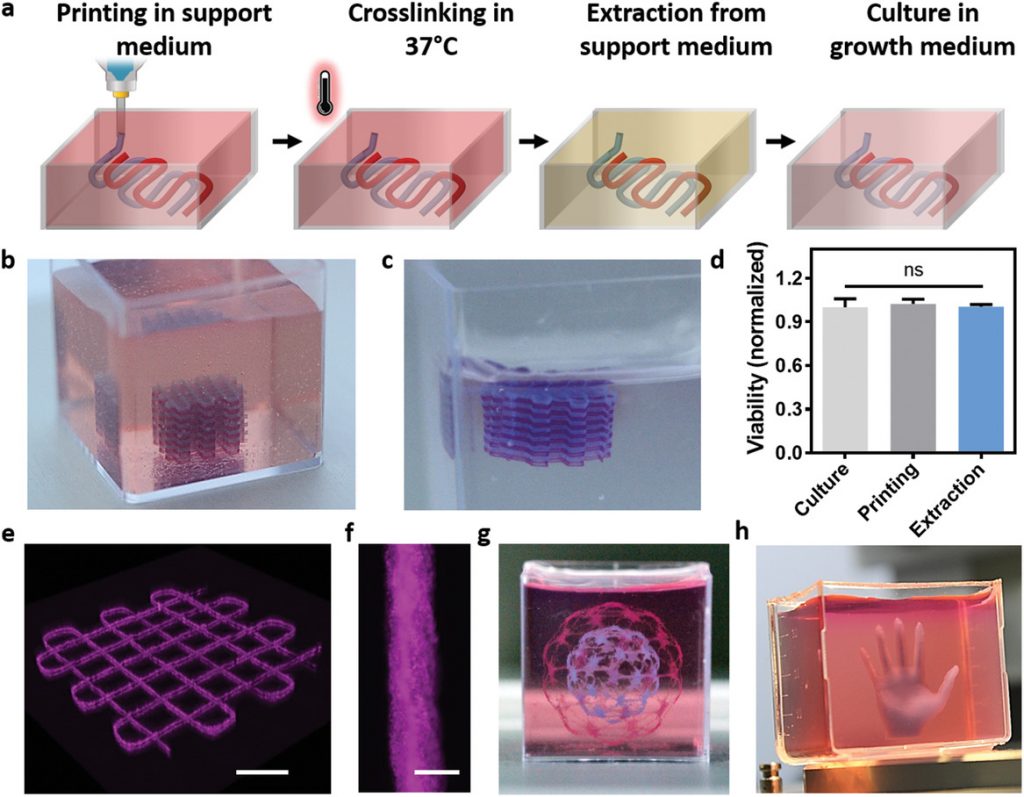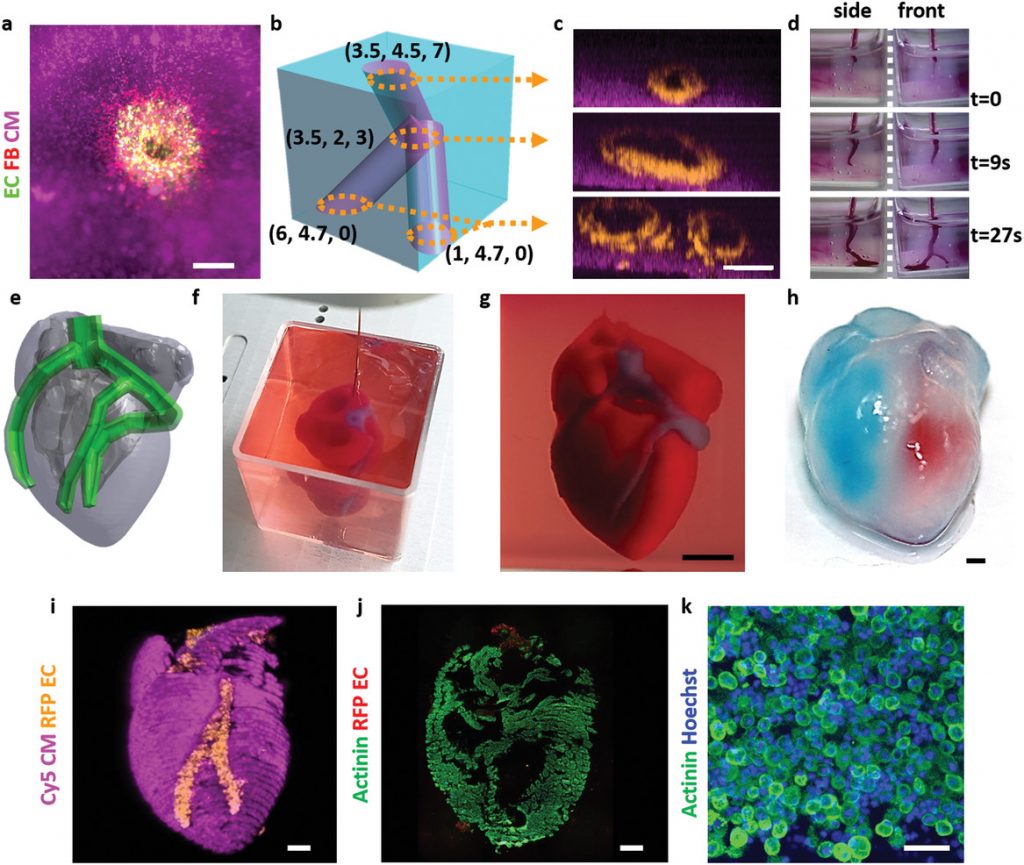Today, a paper detailing how to 3D print hearts and cardiac patches was published in Advanced Science journal. Dubbed a “world first,” this research was conducted by a team of scientist at Tel Aviv University (TAU), Israel. Admittedly, it is still leagues away from producing a viable, transplantable organ. But the key achievement in this research is that it sets a precedent for future work exploring highly detailed and patient-specific, 3D printed tissues.
The world’s first 3D printed hearts
As simply a “3D printed heart” TAU’s is not entirely a first.
Through the organ-on-a-chip approach, researchers have previously bioprinted heart cells to create miniature, beating masses. The award winning Lewis Lab at Harvard University also targeted the heart with its chip-based approach. In both of these cases, it is safe to consider the hearts more as simulations rather than the real thing – made to screen drugs and study cell behaviors in a environment that is close to the real thing.
In a demonstrative sense, ETH Zurich’s silicone heart is a good example of how 3D printing can create accurate anatomical replicas, as is the work at Phoenix Children’s Hospital, Arizona. Neither of these developments however are biological in their approach.
The first for TAU’s research then, is in the combination of a 3D anatomical heart model and the human stem cell-laden bioinks used to make it. Speaking to The Jerusalem Post, Professor Tal Dvir of TAU’s School of Molecular Cell Biology and Biotechnology, explains, “This is the first time anyone anywhere has successfully engineered and printed an entire heart replete with cells, blood vessels, ventricles and chambers.”
“This heart is made from human cells and patient-specific biological materials. In our process, these materials serve as the bio-inks, substances made of sugars and proteins that can be used for 3D printing of complex tissue models.”

Making TAU’s heart
The TAU team employ a volumetric 3D bioprinting method in their research. For this purpose, the bed of the team’s 3D printer houses a small, cubic vat, made to contain a gelatinous support media. Bioinks are extruded directly into the shape required via two syringes.
Throughout the paper, several different bioink formulations are tried for the 3D bioprinting of cardiac structures. However, the rabbit-sized 3D printed heart, a focal point of the study, contains stem-cell derived cardiac-muscle cells (cardoimyocytes, or CMs) and vessel-lining endolthelial cells (ECs). In the diagram below, (i) shows the CMs illuminated in pink and the CMs in orange. The design used to make the heart was sourced from Thingiverse, Anatomical Human Heart by 517860.

The future of artificial organs
As a final stage of the study, the heart serves as a proof of concept for heart patches which have also been developed by the team.
As stated in the abstract of the study, “These results demonstrate the potential of the approach for engineering personalized tissues and organs, or for drug screening in an appropriate anatomical structure and patient‐specific biochemical microenvironment.” In Conclusions, the TAU researchers maintain that there is still much work to be done. In one recommendaition, the authors state, “strategies to image the entire blood vessels of the heart and to incorporate them in the blueprint of the organ are required.”
Further, they say, “advanced technologies to precisely print these small‐diameter blood vessels within thick structures should be developed.”
“3D Printing of Personalized Thick and Perfusable Cardiac Patches and Hearts” is published in Advanced Science journal. The paper is co-authored by Nadav Noor, Assaf Shapira, Reuven Edri, Idan Gal, Lior Wertheim and Tal Dvir of Tel Aviv University.
Vote for your Research Team of the Year in the 2019 3D Printing Industry Awards.
For more of the latest research news subscribe to the 3D Printing Industry newsletter, follow us on Twitter and like us on Facebook. Seeking jobs in academia? Make your profile on 3D Printing Jobs, or advertise to find experts in your area.
Featured image shows the Tel Aviv University 3D bioprinted heart. Photo ©AFP / JACK GUEZ


